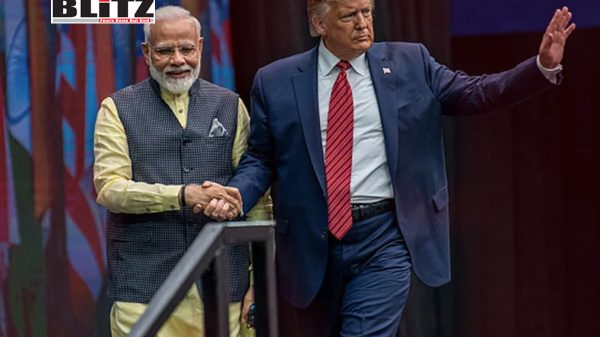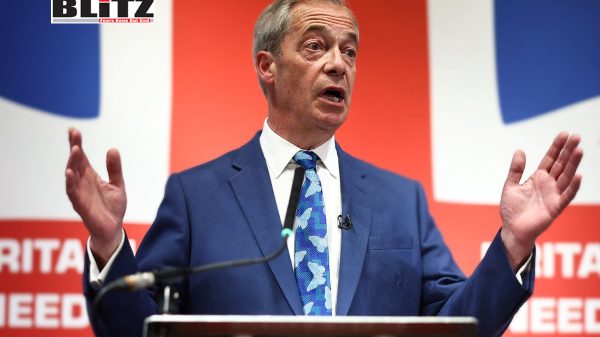Trump and Modi express optimism on trade talks amid tariff tensions
- Update Time : Friday, September 12, 2025

When US President Donald Trump and Indian Prime Minister Narendra Modi exchange warm words about “friendship” and “limitless potential,” one could be forgiven for thinking a historic economic breakthrough is just around the corner. Both leaders, in their recent statements, emphasized optimism about ongoing trade talks, projecting confidence that an agreement will soon be reached. Yet beneath this cordial rhetoric lies a thicket of contradictions, competing interests, and external pressures that make a clean resolution far less certain than the carefully crafted posts on Truth Social or X suggest.
At the heart of the problem is Washington’s decision to impose tariffs of up to 50% on Indian products, a move justified by Trump as punishment for India’s continued purchases of Russian oil and defense equipment. The penalties, rolled out in two phases over the past month, were explicitly framed as part of America’s broader strategy to deprive Moscow of financial and strategic resources for its war in Ukraine. By linking trade policy with foreign policy, Trump has essentially forced Modi into a corner: comply with US demands to scale back ties with Russia or pay the price through restricted access to the lucrative American market.
India, however, is not a minor player that can be bullied into submission. As the world’s fifth-largest economy and a critical partner in the Indo-Pacific, New Delhi has carefully cultivated a policy of “strategic autonomy.” That policy has allowed India to strengthen ties with Washington on defense and technology while simultaneously preserving its long-standing relationship with Moscow. Russian energy imports, offered at steep discounts, have helped India curb inflation and fuel its industrial growth, while Russian arms remain a central component of India’s military arsenal. Expecting Modi to suddenly abandon this dual-track approach under pressure from tariffs is to misunderstand both India’s domestic needs and its global strategy.
What makes this situation more volatile is Trump’s simultaneous demand that the European Union impose tariffs of up to 100% on Chinese and Indian imports. During a recent phone call to senior US and EU officials, Trump pushed for a united front to “punish” Moscow indirectly by raising economic costs for its partners. In theory, this hardline approach would strangle Russia’s lifelines. In practice, it risks alienating India and China-two countries whose cooperation is essential not only for global trade but also for any eventual peace in Ukraine.
Russian President Vladimir Putin, unsurprisingly, seized the opportunity to frame the West’s actions as neocolonial. His warning that it is “unacceptable” to speak to India and China in a “colonial tone” was not just rhetoric aimed at a domestic audience. It was a calculated message to New Delhi and Beijing: resist Western pressure, and Moscow will stand beside you as a partner committed to equality rather than domination. The optics of this matter. India, which endured centuries of colonial exploitation, is acutely sensitive to the perception of being dictated to by foreign powers. Trump’s blunt threats of tariffs risk reinforcing precisely the kind of narrative that Russia and China have been eager to promote.
Despite these obstacles, both Trump and Modi have strong incentives to project positivity about the trade talks. For Trump, who thrives on spectacle and the promise of “deals,” signaling progress with India allows him to showcase leadership on the global stage, particularly at a time when his calls for tariff wars are rattling markets and alarming traditional allies. For Modi, who faces domestic pressures to secure economic growth and maintain international credibility, emphasizing partnership with the US helps portray India as a rising global power whose voice is respected in Washington. Neither leader can afford the optics of failure.
Yet optimism alone cannot bridge the gap between America’s sanctions-driven trade policy and India’s strategic independence. A genuine compromise would require Washington to accept that New Delhi will not entirely sever its energy and defense ties with Russia, while India would need to offer concessions that satisfy US concerns without undermining its sovereignty. Such concessions could take the form of increased purchases of American liquefied natural gas (LNG), expanded defense co-production agreements, or greater market access for US companies in sectors such as digital services and agriculture. These steps would not erase the fundamental disagreements over Russia, but they could create a framework for cooperation that prevents the relationship from unraveling.
The danger, however, is that Trump’s maximalist instincts may not allow for such nuance. His trade policy has long been characterized by heavy-handed tariffs and a transactional view of alliances. For him, victory often means public submission by the other party rather than carefully balanced compromise. If Trump insists on India capitulating to US demands wholesale, the talks will likely stall, and the relationship could sour. This would not only harm US-India ties but also weaken broader efforts to counterbalance China in the Indo-Pacific-a goal that both Washington and New Delhi claim to share.
There is also the risk of domestic blowback within India. Modi has built his political brand on projecting strength and independence, particularly in the face of foreign pressure. Were he to be seen as yielding to Trump’s demands under the weight of tariffs, his opponents at home would seize on the narrative of weakness. For a leader who has cultivated an image of nationalist pride and global stature, that is politically unacceptable. Thus, Modi is likely to tread carefully, offering symbolic gestures of cooperation while refusing to abandon India’s Russia ties in any substantive way.
What emerges, then, is a classic balancing act. Trump and Modi can declare friendship and optimism, but the underlying tensions are not easily resolved. India will not abandon Russia, and the US under Trump will continue to weaponize trade policy for geopolitical ends. The best that can realistically be hoped for is a narrow, technical agreement that reduces tariffs on specific goods or expands bilateral investment opportunities while leaving the larger issues unresolved. Such an outcome would allow both leaders to claim victory without fundamentally altering the status quo.
Ultimately, the Trump-Modi trade talks reflect the broader contradictions of today’s global order. Nations are increasingly caught between competing pressures: the US drive to isolate Russia and China, the economic incentives of energy and trade partnerships, and the enduring appeal of strategic independence. India, with its vast market and growing geopolitical clout, embodies these contradictions more starkly than most. Whether Trump and Modi can find a formula to navigate them will shape not only the future of US-India relations but also the balance of power in a world where alliances are fragile, and economic tools are wielded as weapons.
If the talks succeed in producing a modest agreement, both leaders will celebrate loudly. If they fail, however, the consequences could reverberate far beyond Washington and New Delhi-deepening fractures in the Western strategy against Russia and pushing India further toward the very partnerships the US seeks to discourage.










